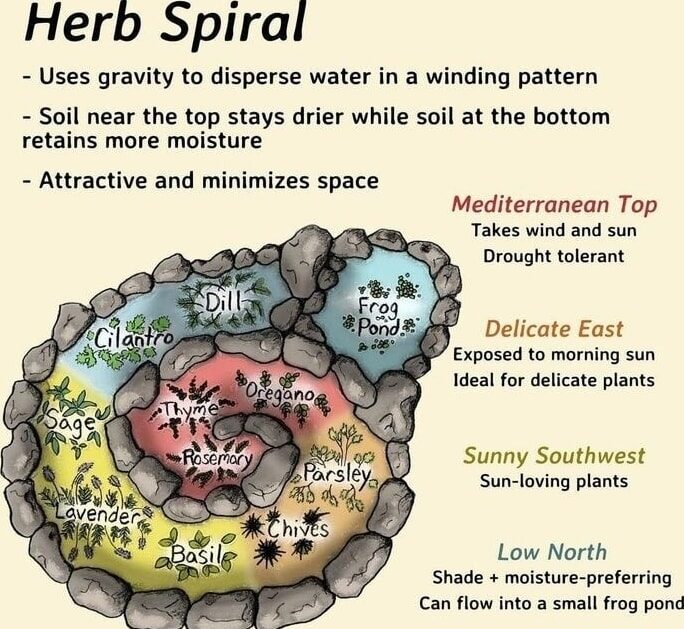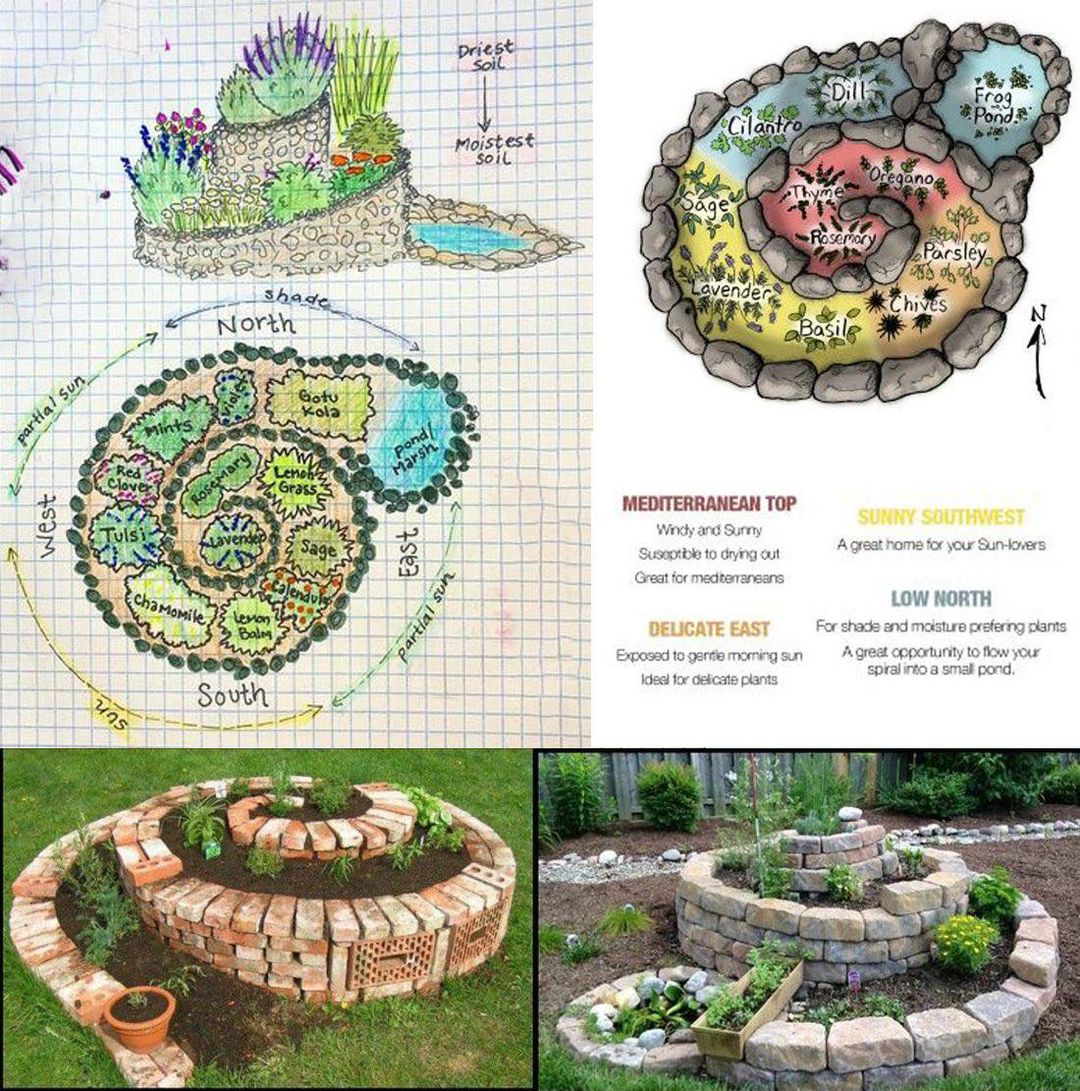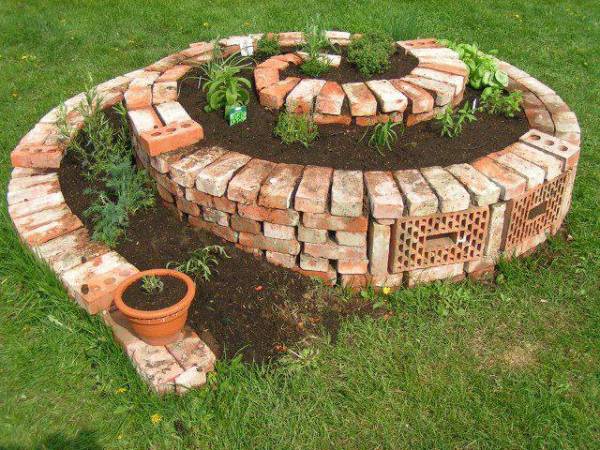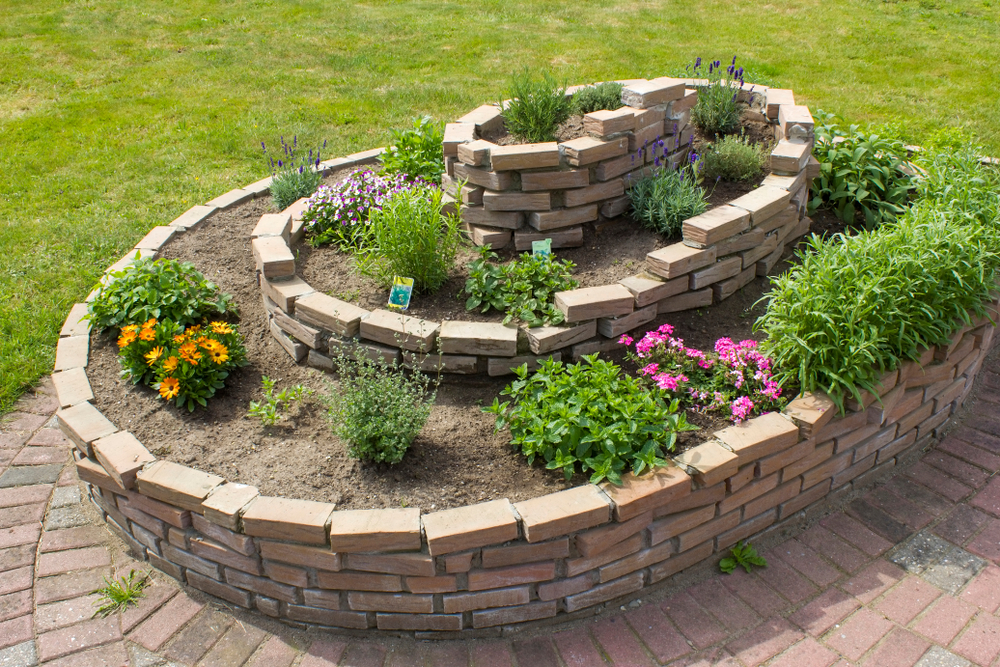Unwinding Nature’s Mystique: Creating Your Spiral Herb Garden with Optimal Plant Positioning
Embark on a journey into the captivating realm of spiral herb gardens, where the intricacies of natural patterns intertwine with practical gardening principles. These visually stunning and space-efficient designs not only optimize growing areas but also foster unique microclimates conducive to a diverse range of herbs. In this comprehensive guide, we’ll delve into the art of constructing your own spiral herb garden while providing insights into optimal plant positioning based on sunlight and moisture requirements.

I. Embracing Spiral Herb Gardens:
Design and Functionality: Inspired by the Fibonacci sequence, spiral herb gardens exemplify nature’s elegance and functionality. Their vertical structure maximizes space and offers varied microclimates for herb cultivation, blending beauty with practicality.
Space Efficiency and Accessibility: The compact spiral layout is tailor-made for small spaces, ensuring ease of access to every herb without the need for excessive bending or stretching.

II. Advantages of Spiral Herb Gardens:
Diverse Microclimates: The spiral configuration creates distinct zones with varying levels of moisture and sunlight, accommodating a wide spectrum of herbs within a single framework.
Enhanced Drainage and Soil Health: Elevated centers facilitate superior drainage, promoting optimal root conditions and soil vitality.
Aesthetic Appeal and Habitat Enhancement: Beyond its visual allure, the garden serves as a habitat for beneficial insects and pollinators, fostering biodiversity and ecological balance.

III. Crafting Your Spiral Herb Garden:
Materials Required:
- Stones, bricks, or retaining wall blocks
- Garden soil and compost
- Mulch (straw, bark, or gravel)
- Herb plants or seeds
- Watering can or irrigation system
- Gardening tools (spade, trowel)
Step-by-Step Guide:
1. Location and Design Selection: Choose a sunny location with a diameter of 5-6 feet, considering the garden’s orientation for optimal sunlight exposure.
2. Constructing the Spiral Foundation: Build the spiral from the center outward using stones or bricks, gradually increasing the height to create a gentle slope.
3. Soil and Compost Preparation: Fill the spiral with a blend of garden soil and compost to enrich the planting beds, ensuring firm packing to prevent settling.
4. Strategic Planting: Position herbs strategically based on sunlight and moisture preferences:
- Top of the Spiral (South-facing side): Ideal for sun-loving herbs like Rosemary, Thyme, and Oregano.
- Middle of the Spiral: Suited for herbs requiring moderate sun and moisture, such as Parsley, Chives, and Cilantro.
- Bottom of the Spiral (North-facing side): Suitable for shade-tolerant herbs like Mint, Lemon Balm, and Tarragon.
5. Mulching and Watering: Apply mulch to conserve moisture and suppress weeds, ensuring thorough watering, especially during establishment and dry spells.
6. Ongoing Maintenance: Regular harvesting promotes new growth, while vigilant monitoring helps address soil health and pest issues.
Conclusion: Your spiral herb garden transcends conventional gardening practices, blending form and function to create a harmonious ecosystem. By meticulously selecting herbs and aligning them with optimal sunlight and moisture conditions, you embark on a journey of nurturing life within a spiraling masterpiece. Embrace the beauty, flavors, and joys of gardening in symbiosis with nature, as your spiral herb garden blossoms into a testament to the artistry of cultivation.










